Welcome to our guide on how to build a hydroponic unit using PVC pipes. Hydroponics is a method of practicing growing plants using nutrient mineral solutions in water, without soil. This method is becoming increasingly popular among gardening enthusiasts as it allows for year-round cultivation and a higher yield of crops.
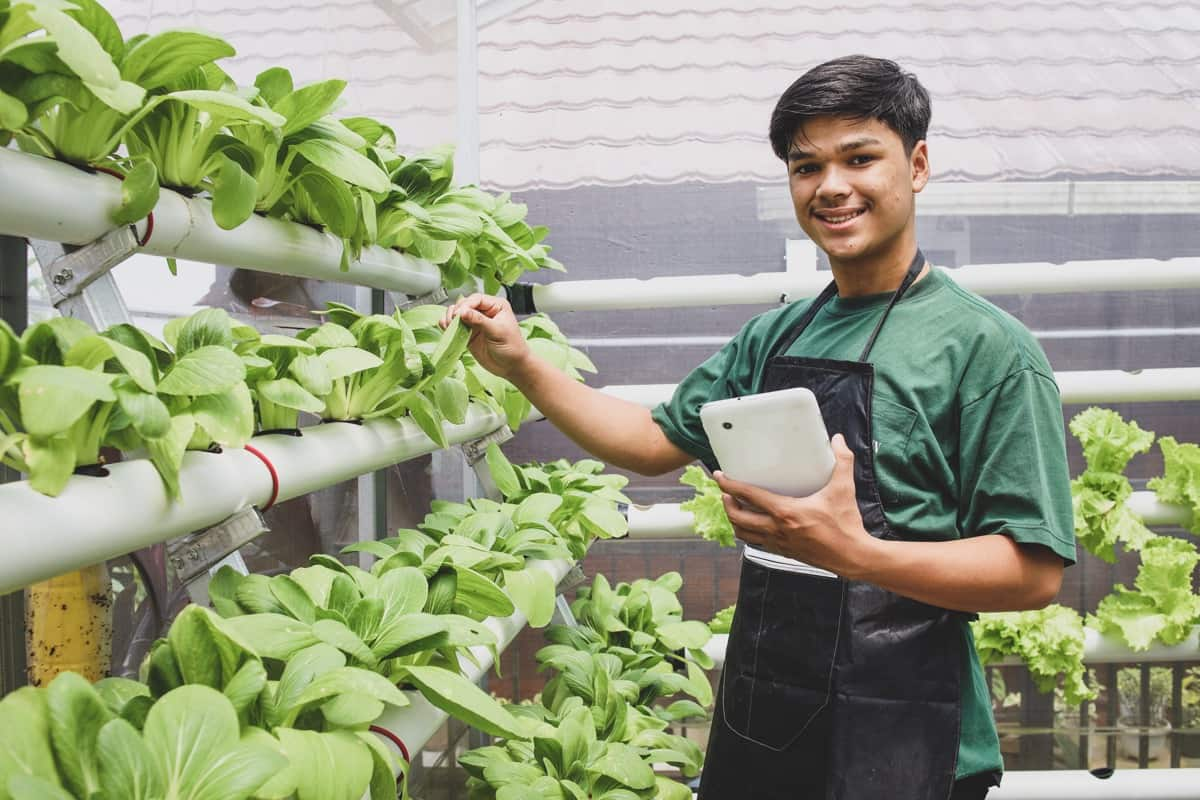
It is an excellent alternative to traditional gardening. It allows for greater control over the growth environment, resulting in higher yields and faster growth rates. The guide is intended for individuals who have a green thumb and want to try something new and those who are new to gardening and want to try Hydroponics.
In this post, we will walk you through the simple steps of building your hydroponic unit using PVC pipes, making it easy for you to enjoy fresh produce in the comfort of your home. Whether you’re a gardener or just starting, this guide is perfect for anyone looking to take their gardening skills to the next level. So, let’s start and build a hydroponic unit that will allow you to grow your vegetables, herbs, and flowers quickly. Let’s check out how to build a Hydroponic unit with PVC pipes below.
What is Hydroponics?
Hydroponics is a method of growing and maintaining plants using nutrient solutions in water, without soil. In a hydroponic system, plants are grown in a nutrient-rich solution and delivered to the roots using various techniques such as drip irrigation, misting, or flooding. This method allows for greater control over the growth environment, making it possible to achieve higher yields and faster growth rates than traditional soil-based gardening.
Additionally, Hydroponics can be used in places where the soil is unavailable or unsuitable for growing plants, such as urban areas or space. It also can be used in greenhouses or indoors. It is a great way to grow and supply plants all year round. Let’s check out some of the advantages and disadvantages of Hydroponics below.
In case you missed it: Ways to Use Neem Oil in Plants: Benefits in Agriculture, Application Method in Garden, and Uses in Hydroponics
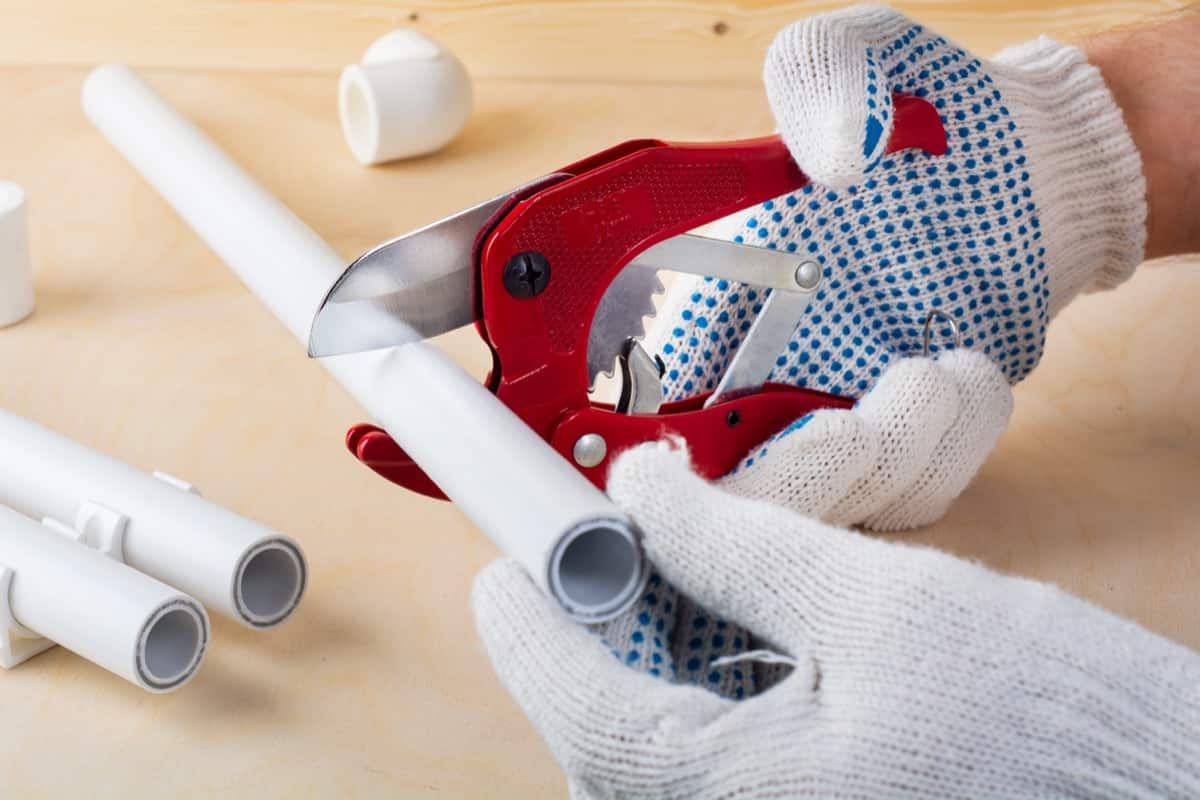
Benefits of Hydroponics
- 90% less water usage
- 20% faster growth
- 30% more growth
- Complete nutrient control
- Less plant stress, as roots are fed all they need
- No fertilizers leaking into groundwater
- Low cost for upkeep
Disadvantages s of Hydroponics
- Plants can die quickly without proper nutrients.
- If there are gaps in light, algae can grow.
- Bigger setups can deprive lower levels of enough nutrients.
- The initial setup can be expensive.
Different types of Hydroponics systems
- Deep Water Culture (DWC) – In this system, plants are grown with their roots suspended directly in a nutrient-rich solution. This system is simple to set up and maintain, making it a popular choice for beginners.
- Flood and Drain (Ebb and Flow) – This system uses a timer to periodically flood the grow tray with nutrient solution and drain it back out. It allows for oxygenation of the roots and prevents waterlogging.
- Drip System – The nutrient solution is delivered to the plant’s roots through a series of drippers or misters. This method allows for precision nutrient delivery and is ideal for more extensive scale operations.
- Nutrient Film Technique (NFT) – This system uses a shallow, sloped tray and a constant flow of nutrient solution to submerge the roots of the plants. This method is ideal for growing plants with delicate roots, such as lettuce and herbs.
- Aeroponics – This system uses a mist of nutrient solution to deliver nutrients to the roots of the plants suspended in the air. This system is the most advanced and efficient method and is difficult to set up and maintain.
- Wicking – this system uses a wick to transfer nutrient solution from a reservoir to the growing medium. It’s simple to set up and maintain and can be used with various growing mediums.
How to build a Hydroponic unit with PVC pipes
Building a DIY hydroponic garden at home is a fun and rewarding project that can provide fresh produce year-round. With a few basic materials and some knowledge of hydroponic gardening techniques, you can easily set up your hydroponic system and start growing your fruits, vegetables, and herbs.
In case you missed it: Hydroponic Farming in Canada: How to Start, Suitable Crops, Setup Cost, and Advantages
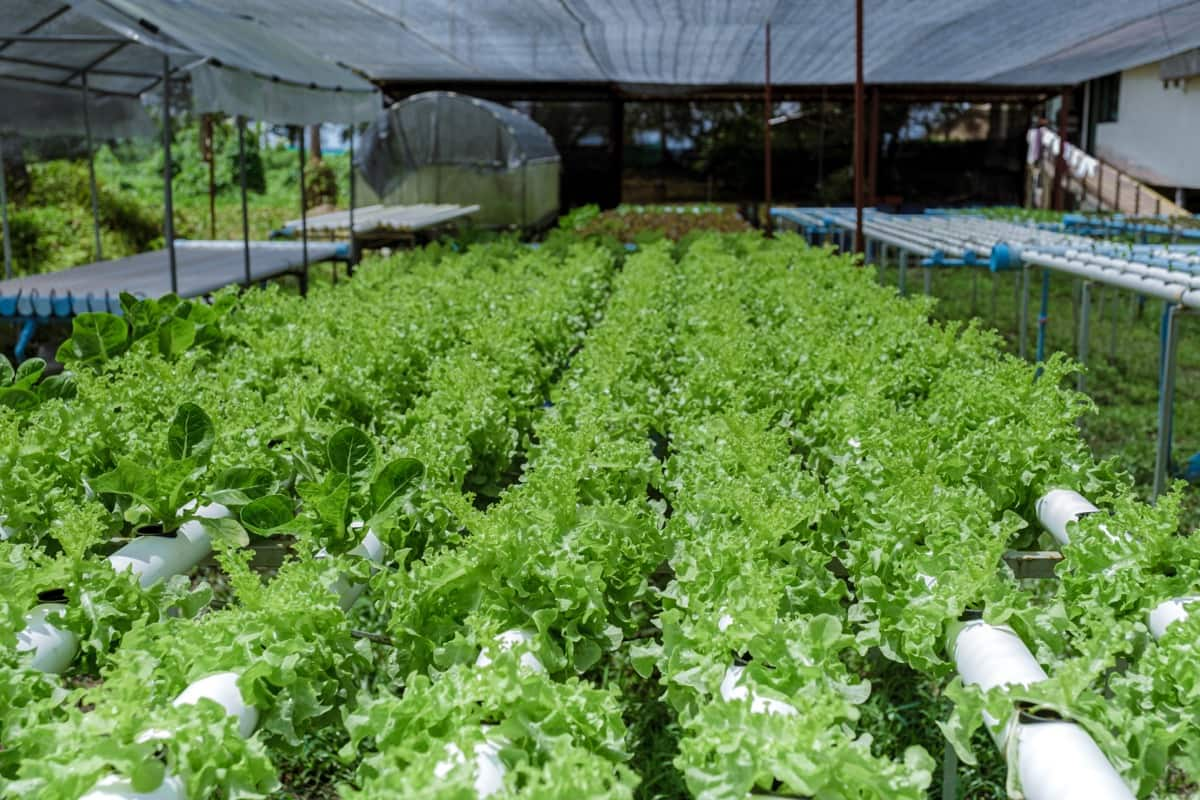
Materials needed for a DIY Hydroponic PVC pipe system
| Small mesh for each plant | 4-inch pipes |
| Sawhorses or cement blocks for support | Mag drive pump |
| Alligator stakes | Bypass valve |
| 1/8-inch fittings and tubing | 1/2-inch black poly tubing |
| Reservoir tank | Fittings for the header lines |
| 4-inch elbow and T-fittings |
Tools required to build a DIY Hydroponic PVC pipe system
| PVC cutter or saw | PVC primer and cement |
| Measuring tape | Adjustable wrench |
| Drill | Hacksaw |
| Hole saw | Pliers |
| Screwdriver | Silicone sealant (optional) |
| Teflon tape |
The ultimate result should be a 3 1/2 FT by 8 FT in size system that can support up to 36 plants 6 inches tall.
Best way to cut PVC pipes to build a DIY Hydroponic unit
The hydroponic garden system should also hold up to 15 gallons of water, with the nutrient reservoir holding an additional 15 to 20 gallons. To build a homemade hydroponic system using PVC pipes, you will need to cut the pipes to 7 ft 6 inches in length, ensuring that all the pieces are the same. You will also need to cut three 6-inch pieces for the u-turns using PVC elbows. You can use a PVC cutter or saw to cut the PVC pipes properly.
Use a PVC primer to clean the burrs from the cut pieces, and then glue the pieces together using PVC cement. Hold the pieces together for a few seconds to avoid them from popping back out. Apply the glue on the fittings and end of the pipe, and twist the pieces slightly to remove any air bubbles. Make three u-turns by pushing the u-turn pieces together and placing them upright on a surface. The final setup also includes the following:
- Cutting holes for the plants.
- Reinforcing the hydroponic system.
- Cleaning the system.
- Making homemade netted pots.
- Controlling the water level in the pipes.
Procedure for assembling a DIY PVC Hydroponic pipe
Step 1: Place the PVC pipes on supports: Use 2x4s and cement blocks or a quick sawhorse made with 2×4 wood and hinges to support the 4 to 6-inch PVC pipe.
In case you missed it: Ways to Use Neem Oil in Plants: Benefits in Agriculture, Application Method in Garden, and Uses in Hydroponics
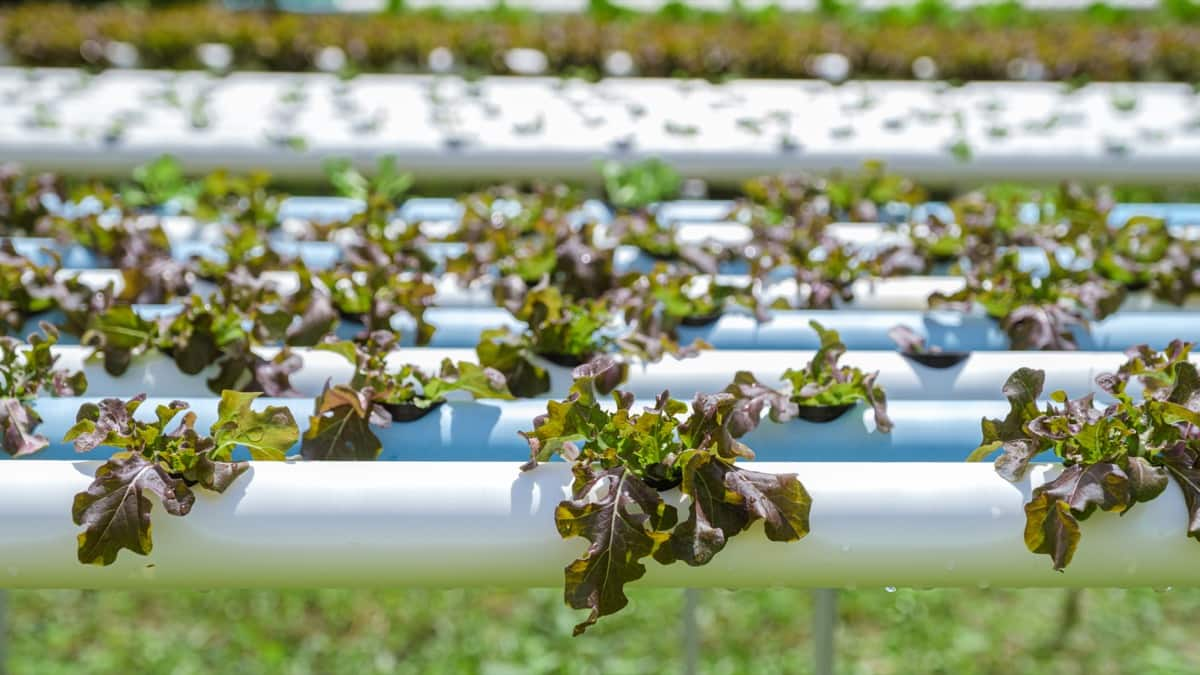
Step 2: Adjust pipe height: Use two or more sawhorses to support the connected pipes, with the side furthest from the reservoir being the highest and equal height. The side nearest the reservoir should be 1 to 3 inches lower for every 8-foot length to allow the solution to drain back into the reservoir.
Step 3: Cut the PVC piping: Cut the PVC piping to the desired length.
Step 4: Attach end caps and connect pipes: Attach end caps to the higher ends of the large pipes at the reservoir’s far side. Connect the large 4-inch pipes with T-fittings, except for the first and last pipes connected with 4-inch elbows. Optionally, glue the connections with PVC cement, or use duct tape to make disassembly easy. One 4-inch PVC elbow will have a 3/4-inch thru-hull inserted into the bottom for draining.
Step 5: Cut holes in the pipe: Cut three 1/2-inch holes at the desired spacing (8 to 12-inch centers) to match the pot sizes.
Step 6: Set up the header line: Run 1/2-inch poly tubing along the outside pipes and cut it to a length that reaches the middle of the T-fittings and elbow fitting. Connect the 1/2-inch poly tubing to the larger pipe at the shorter end, and attach a 1/2-inch end cap. Punch small holes into the 1/2-inch header line to connect the feeder tubing.
Step 7: Insert fittings: Insert fittings (i.e., 1/8, 3/16, 1/4-inch) into each hole with barbed or fittings with thread on one side and barbed on the other.
Step 8: Connect the feeder lines: Connect the feeder lines to the fittings. Cut the tubing to a length reaching the larger hole or stake with slack.
Step 9: Connect the thru-hull fitting: Connect the outside of the thru-hull fitting in the 4-inch elbow to a 3/4-inch hose that leads back to the reservoir.
Step 10: Run a 1/2-inch line from the pump to the PVC pipe: Run a 1/2-inch line from the pump to a 1/2-inch PVC T inserted between the middle pipes.
Optional Step: Bypass valve
- Insert a 1/2-inch poly T a few inches above the pump that sits at the bottom of the reservoir.
- Connect a small 3-inch piece of 1/2-inch poly tubing to the 1/2-inch T.
- Connect a bypass valve to the small piece of 1/2-inch tubing to control the flow rate.
- Insert drippers into the ends of the small feeder lines for even feeding for each pot and to increase pressure in the system for pump efficiency.
The best PVC pipe plastic for a DIY Hydroponic unit
For hydroponic systems, schedule 40 PVC pipe is the most commonly used and is considered safe for food and water use. Schedule 40 PVC pipe is also UV resistant and can withstand temperatures up to 140 degrees Fahrenheit.
In case you missed it: Feed Management of Sheep and Goats: Formulation, Ingredients, Organic, DIY Feed mix, and Feeding Practices
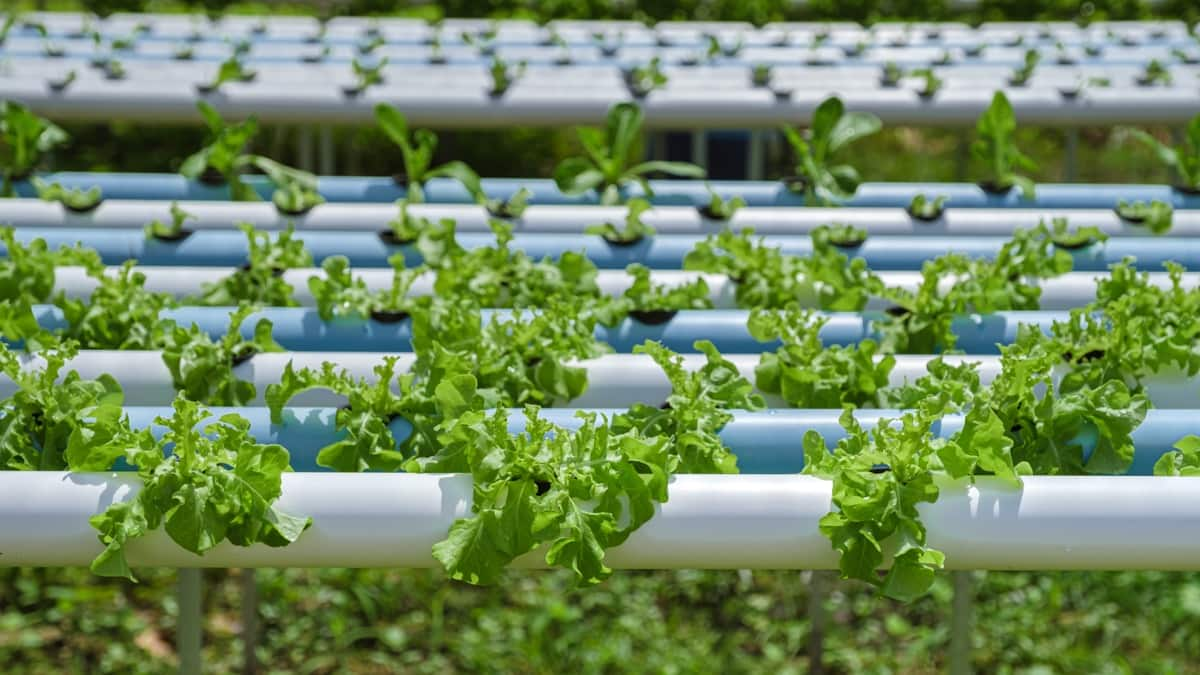
Another good option for a PVC hydroponic system is a PVC-O pipe. PVC-O is an abbreviation for oriented PVC, a PVC pipe stretched during manufacturing. It makes it stronger and more durable than regular PVC pipe and can withstand higher pressures. PVC-O is also more flexible, which makes it easier to install and less likely to crack or break.
Steps for the setup of a DIY Hydroponics system
- Step 1: Gather Materials. You will need PVC pipes and fittings, a water pump, tubing, a container for the water and nutrient solution, growing trays or cups, net cups, and growing media such as clay pebbles or rock wool.
- Step 2: Design the System. Decide on the size and layout of your hydroponics system, keeping in mind the number of plants you want to grow and the available space.
- Step 3: Cut and Assemble PVC Pipes. Cut the PVC pipes to the appropriate lengths and use PVC fittings to assemble the system’s frame. Be sure to use PVC cement to secure the connections.
- Step 4: Install the Water Pump. Place the water pump in the water and nutrient solution container, and connect it to the PVC pipes using tubing.
- Step 5: Add Growing Trays or Cups. Place the growing trays or cups on top of the PVC frame, and fill them with your chosen growing media.
- Step 6: Add Net Cups. Place the net cups in the growing trays or cups, and insert the plants into the net cups.
- Step 7: Add Water and Nutrient Solution. Fill the container with water and the appropriate nutrient solution for your plants. Turn on the water pump to begin circulating the solution through the PVC pipes and into the growing trays or cups.
- Step 8: Monitor and Maintain. Regularly check the pH and nutrient levels of the water and adjust as necessary. Keep an eye on the plants and address any issues, such as pests or diseases.
- Step 9: Enjoy the fruits of your work. Once your plants are grown, you can enjoy the fruits of your work.
What plants can be grown in DIY PVC hydroponic units?
A PVC hydroponic garden can grow a wide variety of plants, including leafy greens, herbs, root vegetables, tomatoes, cucumbers, peppers, and strawberries. When starting your garden, using seeds or seedlings is recommended, and planting at least three seeds in each net pot.
Leafy greens such as spinach, lettuce, and bell peppers are good for beginners. At the same time, herbs like watercress, rosemary, oregano, dill, thyme, parsley, mint, and basil add flavor to your meals. Strawberries are the best choice for a PVC hydroponic garden as they can be grown year-round, and harvesting is easy.
In case you missed it: Mustard Cake Fertilizer Uses in the Garden: Step-By-Step Process, Plant Benefits, and Application Method
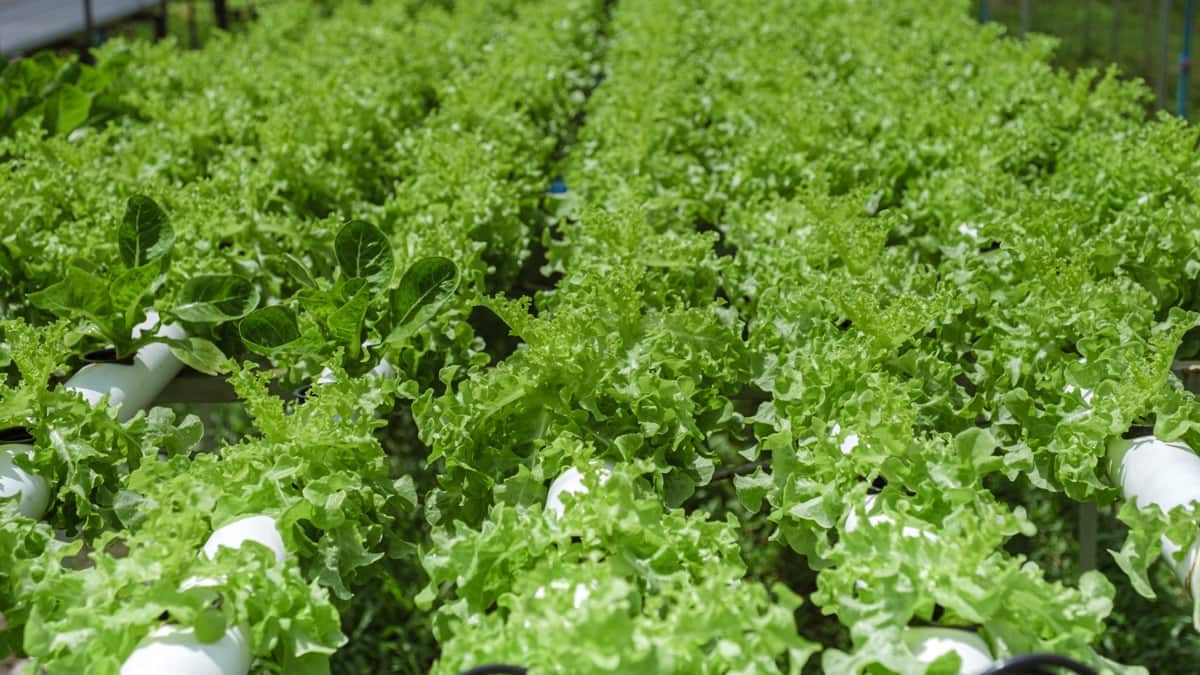
Conclusion
Building a PVC pipe hydroponic growing system is a cost-effective and efficient way to grow various plants year-round. The process is relatively simple and can be completed with a few basic materials and some basic knowledge of hydroponic gardening techniques.
It’s essential to use PVC pipe rated for safe use with food and potable water and to consider the specific needs of the plants you want to grow in terms of lighting, temperature, and nutrient conditions. Whether a beginner or an experienced gardener, a PVC pipe hydroponic system can be a fun and rewarding way to grow fresh produce at home.
- Types of Pesticides Used in Agriculture: A Beginner’s Guide
- Economical Aquaculture: A Guide to Low-Budget Fish Farming
- 15 Common Planting Errors That Can Doom Your Fruit Trees
- How to Make Houseplants Bushy: Effective Tips and Ideas
- Innovative Strategies for Boosting Coconut Pollination and Yield
- Pollination Strategies for Maximum Pumpkin Yield
- The Complete Guide to Chicken Fattening: Strategies for Maximum Growth
- Natural Solutions for Tulip Problems: 100% Effective Remedies for Leaf and Bulb-Related Issues
- Revolutionizing Citrus Preservation: Towards a Healthier, Greener Future
- Natural Solutions for Peony Leaf and Flower Problems: 100% Effective Remedies
- Maximizing Profits with Avocado Contract Farming in India: A Comprehensive Guide
- Natural Solutions for Hydrangea Problems: 100% Effective Remedies for Leaf and Flowers
- The Ultimate Guide to Choosing the Perfect Foliage Friend: Bringing Life Indoors
- From Sunlight to Sustainability: 15 Ways to Use Solar Technology in Agriculture
- The Ultimate Guide to Dong Tao Chicken: Exploring from History to Raising
- The Eco-Friendly Makeover: How to Convert Your Unused Swimming Pool into a Fish Pond
- Mastering the Art of Delaware Chicken Farming: Essentials for Healthy Backyard Flocks
- 20 Best Homemade Fertilizers for Money Plant: DIY Recipes and Application Methods
- How to Craft a Comprehensive Free-Range Chicken Farming Business Plan
- Brighten Your Flock: Raising Easter Egger Chickens for Beauty and Bounty
- How to Optimize Your Poultry Egg Farm Business Plan with These Strategies
- Subsidy for Spirulina Cultivation: How Indian Government Schemes Encouraging Spirulina Farmers
- Ultimate Guide to Raising Dominique Chickens: Breeding, Feeding, Egg-Production, and Care
- Mastering the Art of Raising Jersey Giant Chickens: Care, Feeding, and More
- Ultimate Guide to Raising Legbar Chickens: Breeding, Farming Practices, Diet, Egg-Production
- How to Raise Welsummer Chickens: A Comprehensive Guide for Beginners
- How to Protect Indoor Plants in Winter: A Comprehensive Guide
- Ultimate Guide to Grow Bag Gardening: Tips, Tricks, and Planting Ideas for Urban Gardeners
- Guide to Lotus Cultivation: How to Propagate, Plant, Grow, Care, Cost, and Profit
- Agriculture Drone Subsidy Scheme: Government Kisan Subsidy, License, and How to Apply Online
- Ultimate Guide to Raising Araucana Chickens: Breed Profile, Farming Economics, Diet, and Care
- Bringing Hydroponics to Classroom: Importance, Benefits of Learning for School Students
- Ultimate Guide to Raising Polish Chickens: Breed Profile, Farming Economics, Diet, and Care
- Ultimate Guide to Raising Australorp Chickens: Profile, Farming Economics, Egg Production, Diet, and Care
- Silkie Chicken Farming: Raising Practices, Varieties, Egg Production, Diet, and Care
- Sussex Chicken Farming: Raising Practices, Varieties, Egg Production, Diet and Care
Am kind of excited about what I will learn on this platform…